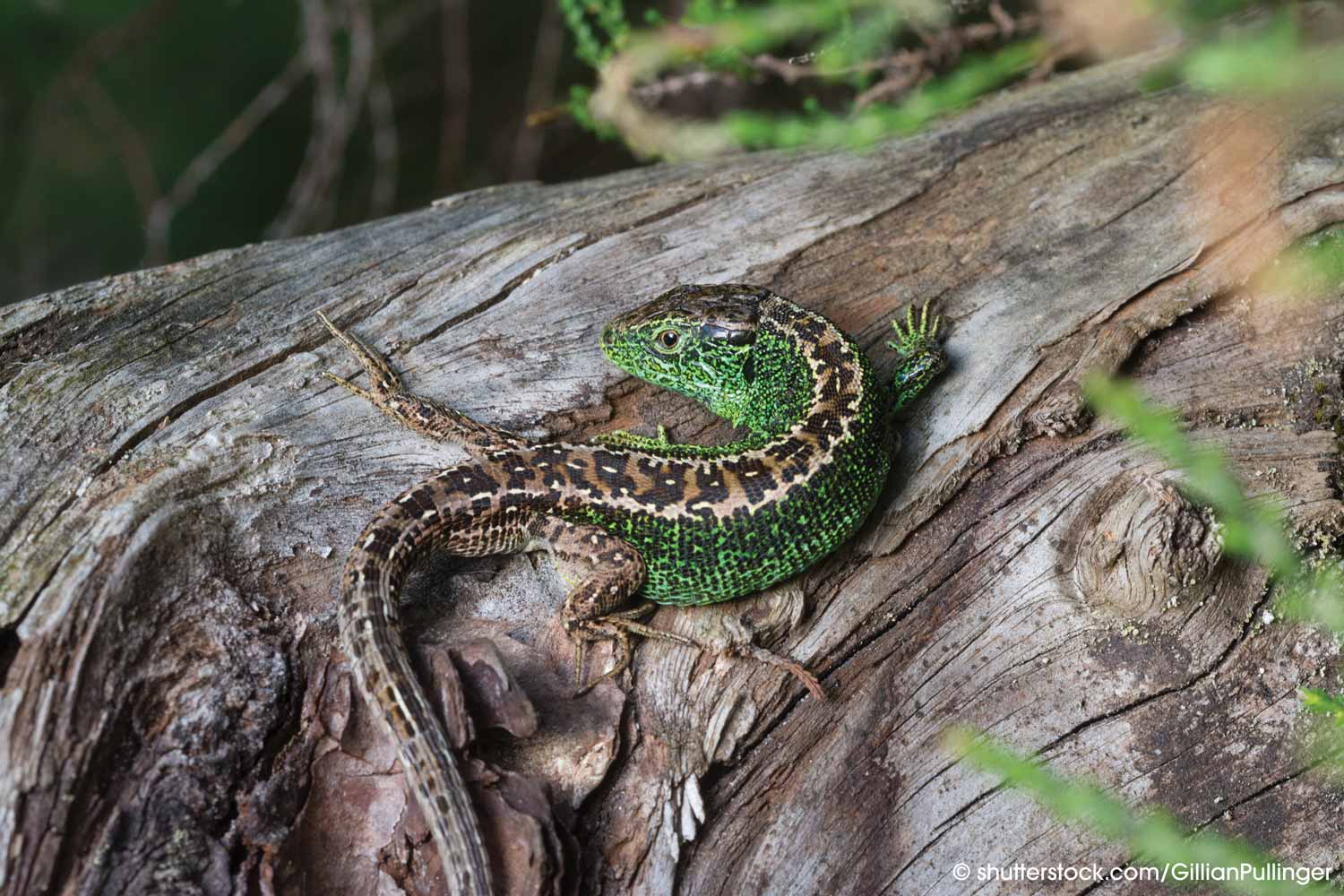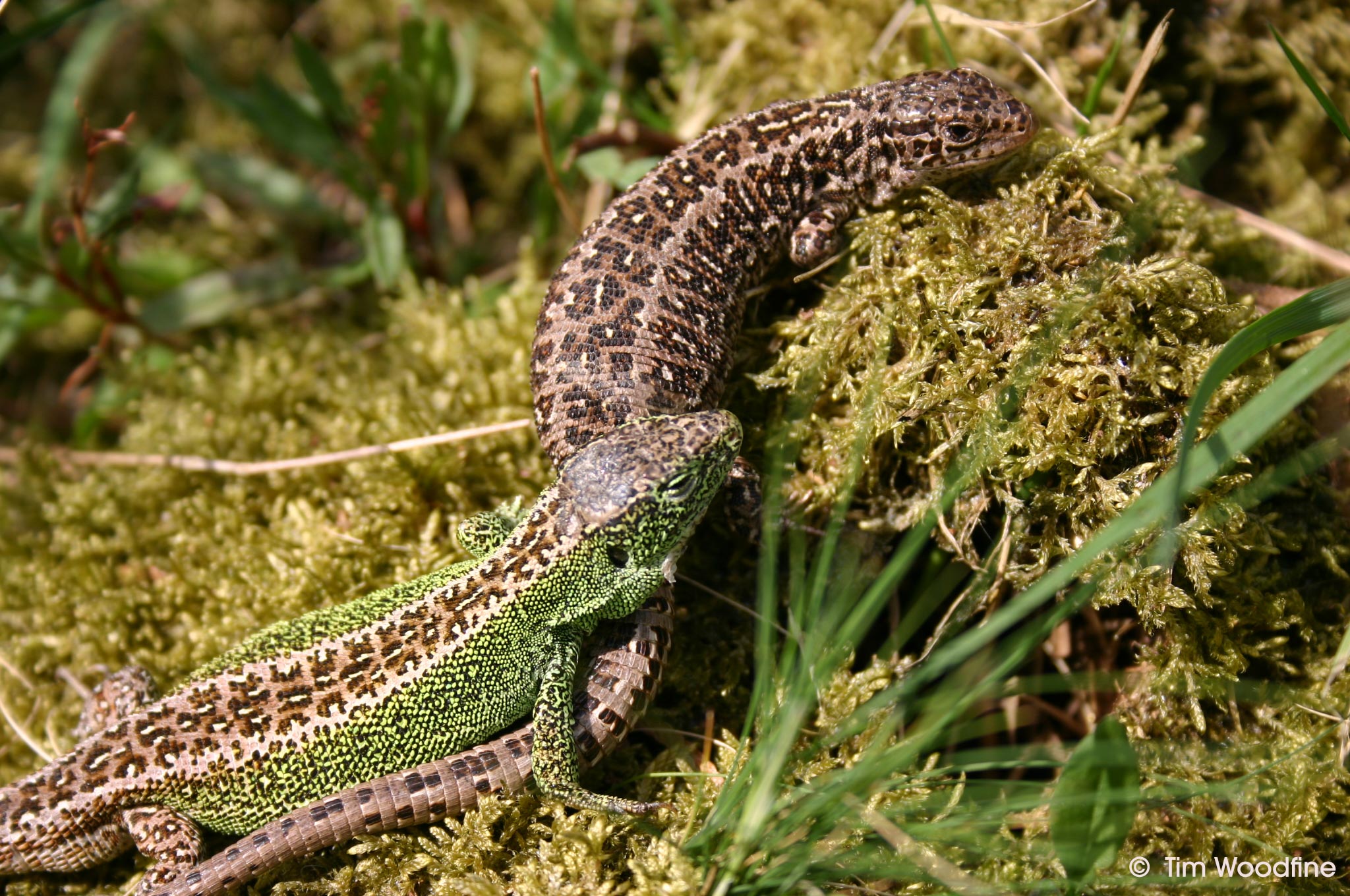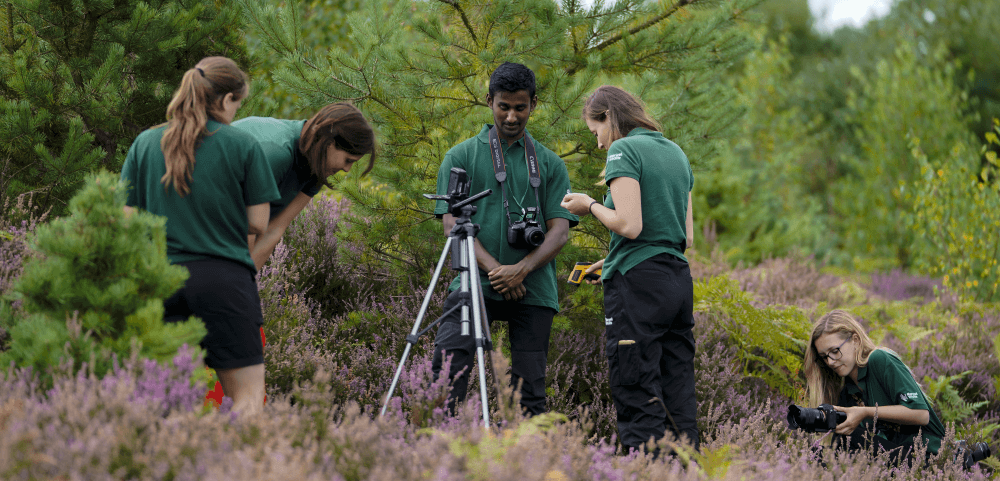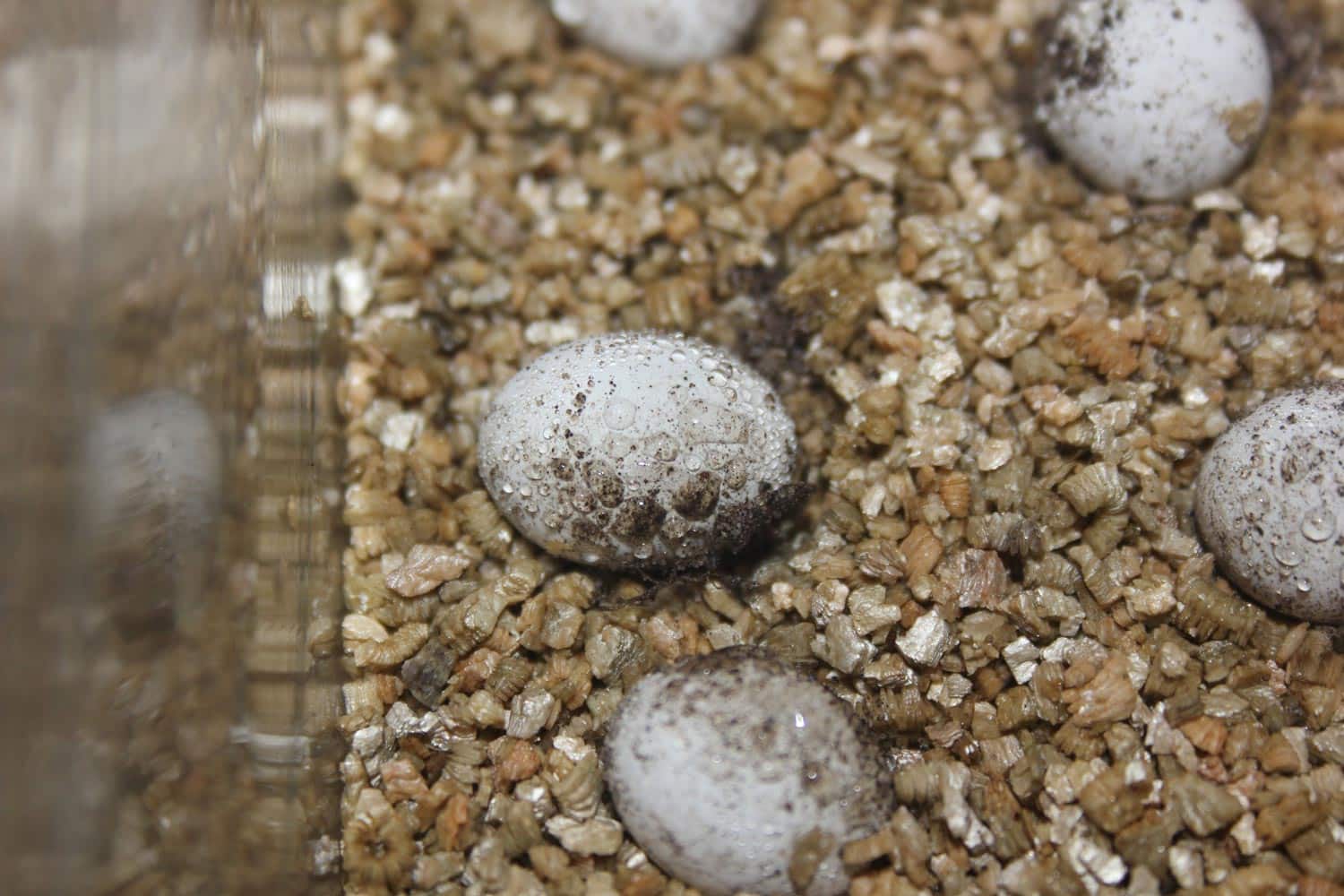Sand lizard
Common name: sand lizard
Scientific name: Lacerta agilis
Sand lizards are one of Britain’s rarest reptiles. For over 30 years, Marwell Wildlife has been breeding and re-releasing sand lizards in the South of England. These little lizards are cold-blooded, so they love warm, sandy places like heathlands and dunes, where they can bask in the sun and hide among plants. Males are especially eye-catching in spring, with their bright green sides that help them attract females. Sand lizards are the only egg-laying lizards in the UK. They lay their eggs in the sand, which makes it very important to protect their habitats from disturbance and damage.
In the UK, sand lizards can grow up to 20 cm long. Their flattened bodies allow them to stay close to the ground, soaking up heat efficiently. The rows of dark spots on their bodies provide excellent camouflage, blending seamlessly into their surroundings.
Fast Facts
-
Status
Least concern
-
Size
20cm long
-
Weight
10-15 grams
-
Gestation
Eggs hatch after 31-62 days
-
Young
Clutches of 6 to 12 eggs are laid
-
Lifespan
Up to 20 years
In the wild
Sand lizards feast on insects, slugs, spiders, and sometimes fruit and flowers.
The sand lizard is the UK’s rarest lizard, found in heathlands in Dorset, Hampshire, Surrey, and coastal dunes in Wales, Merseyside, Kent, West Sussex, Devon, and Cornwall. They love sunny spots near mature plants where they can bask and soak up the warmth.
Males emerge from hibernation in early spring and turn bright green to attract females. Breeding typically occurs from late spring to early summer.
In the wild, the sand lizard’s main predators are birds of prey, particularly kestrels. They are also preyed upon by pheasants, foxes, badgers, weasels, and domestic animals like cats. Sand lizards can shed their tails to escape danger, and the tails grow back!
Marwell has been heavily involved in conserving this species for over 30 years. Much of our recent work has focused on the reintroduction of the sand lizard to Eelmoor Marsh Site of Special Scientific Interest (SSSI) which we began in 2017. While widespread across Europe, these fascinating creatures have experienced alarming declines in the UK due to the loss of their preferred habitat—sandy heathland. Today, they are predominantly found in southern England.



